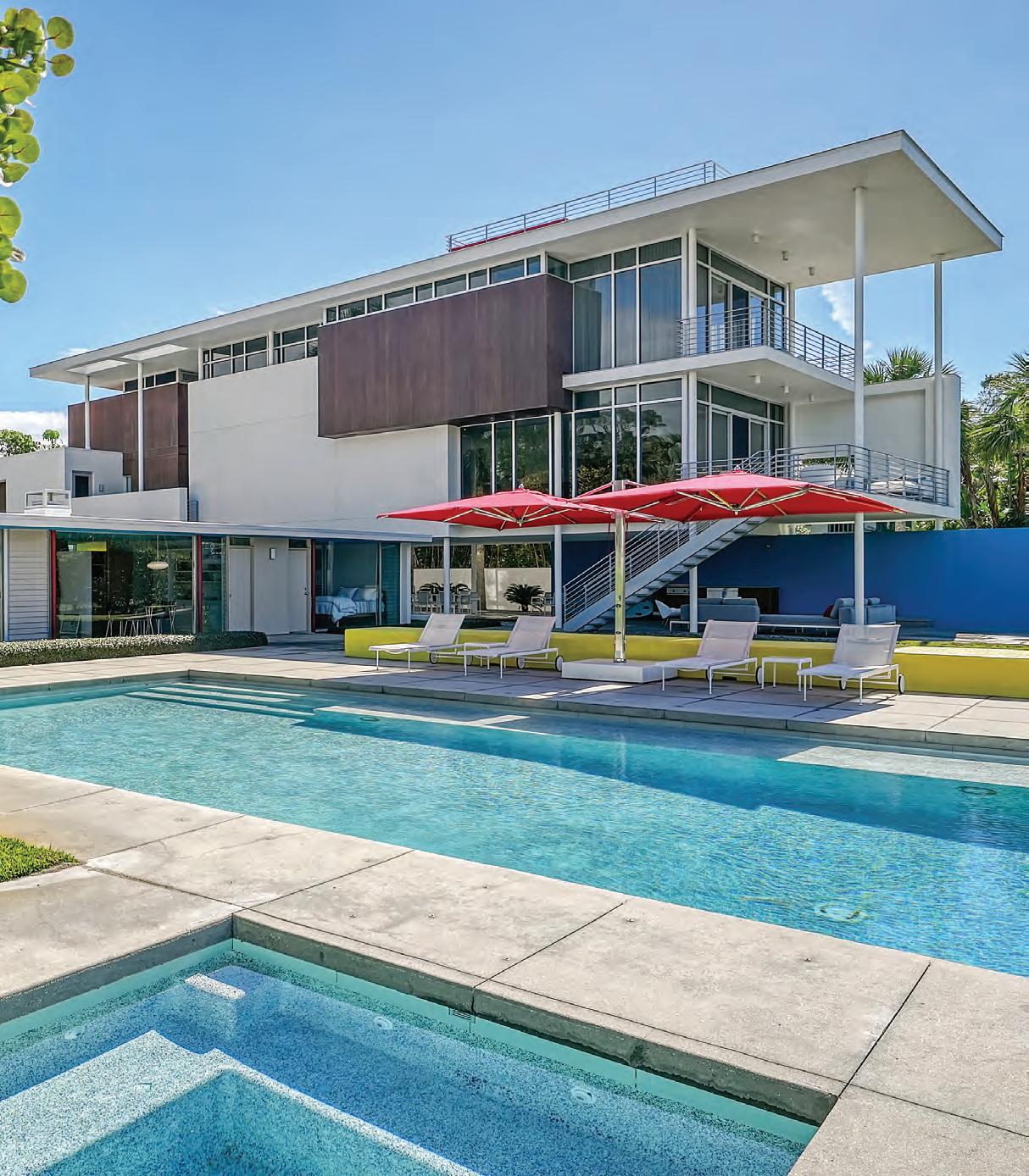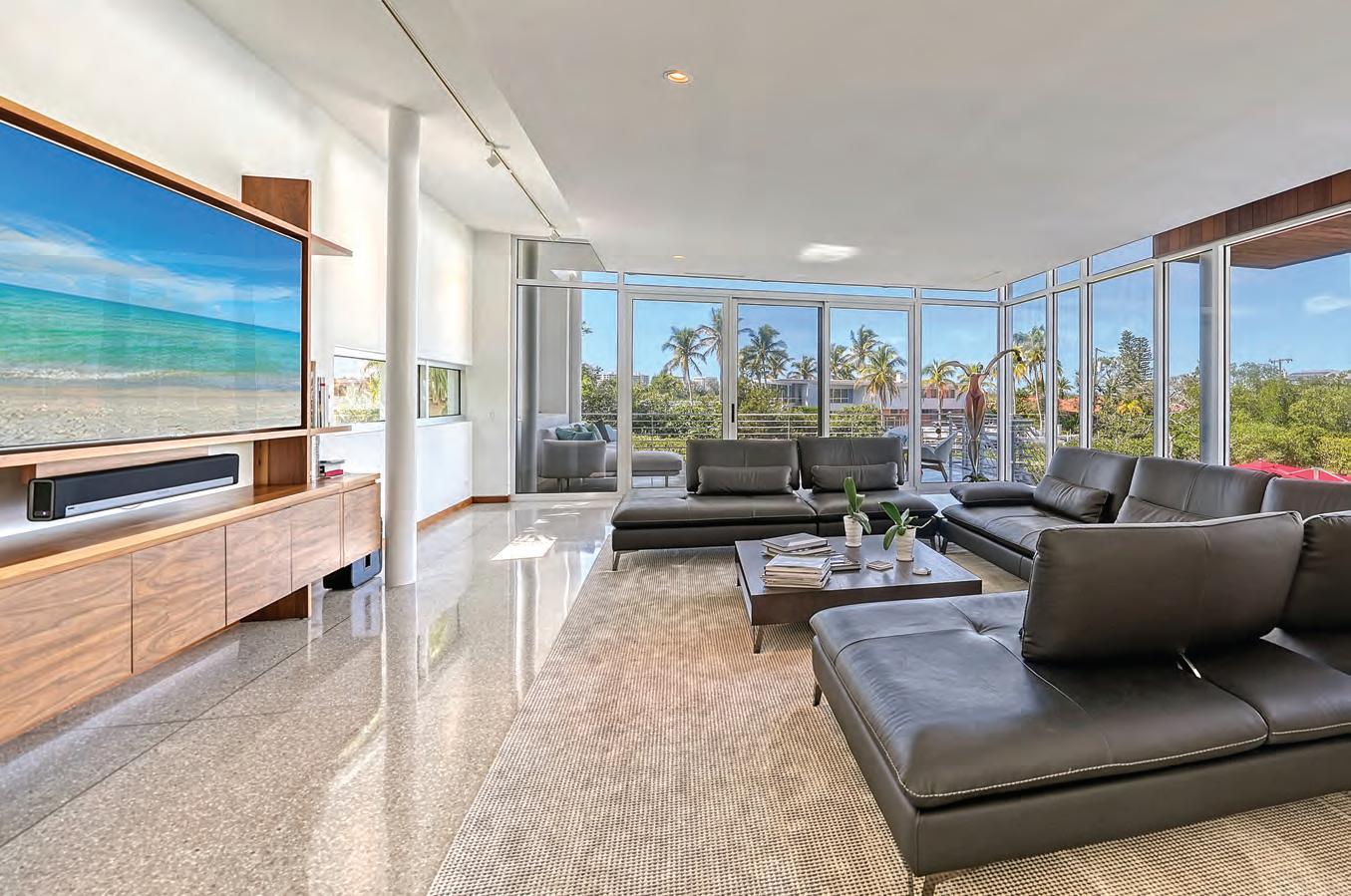
1 minute read
At Home with History
The original Revere Quality House now serves as a guest house and pool pavilion for a newer 4,755-square-foot “companion house” built in 2007. Similar design motifs unify the two structures to create a lavish Siesta Key estate. At upper left, the view from the Revere House out to the pool.
Is it a historically important example of the Sarasota School of Architecture — the first moment when the style came into focus and attracted the world’s attention? Is it the struggle to save the house after it had fallen into disrepair — a struggle that ended with a triumphant second act? Or is the personal drama of the three iconic architects who created it?
As a property it is very much an anomaly. A 75-year-old house (935 square feet) paired with a 4,755-squarefoot modernist mansion built in 2007. They occupy an idyllic setting on Bayou Louise, at the north end of Siesta Key. At first glance, the place seems se- cluded; you are surrounded by a green lawn, and clusters of mangroves and soaring bamboo. But from the upper levels of the newer structure a view appears — over the bay, out to the keys. At the gate — yes, the property is gated — you’ll find a plaque announcing the property is listed on the National Register of Historic Places. As architectural critic John Howey put it, “Literally millions of homes incorporating aspects of its design have been built across the southern United States.”

Back in the 1950s, the smaller house was the most famous in Sarasota. It was one of the heavily publicized Revere Quality Houses, a collection of eight homes spread through the country. The Revere Copper Co. had sponsored a competition to build the perfect post war home — something new and modern — to appeal to the millions of returning G.I.s and the families they were starting to raise. And if it featured Revere products, like pipes and wiring, so much the better.
Ralph Twitchell, at the time the town’s most prominent architect, entered the competition, along with his new junior partner, a young man just out of the army and eager to start his career. Paul Rudolph was a Southerner by birth but had studied at Yale with Walter Gropius. His viewpoint meshed
Continued on Page 102










